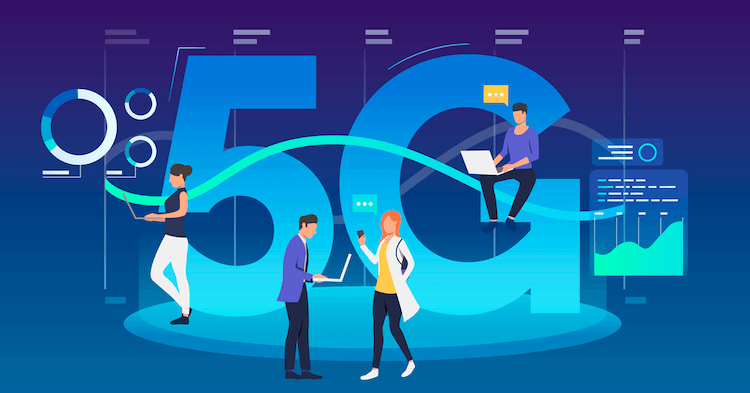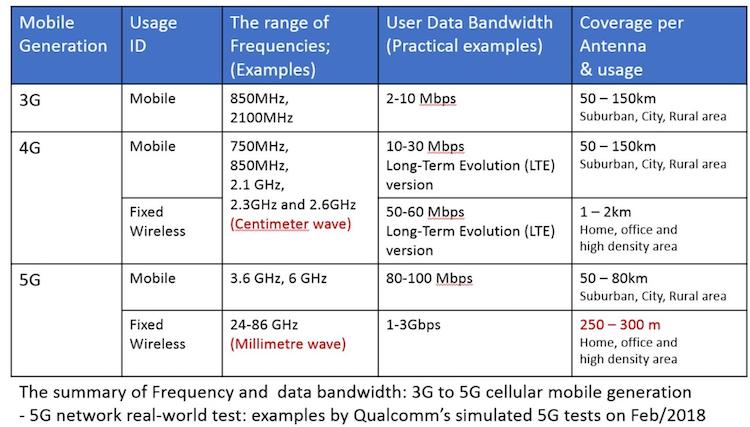
We’re on the brink of another mobile communications revolution as the whole world gets ready for 5G connectivity. This will be a new way for mobile devices to connect to the Internet, and fifth-generation technologies will definitely affect the whole mobile development industry as well as consumers.
In this article, we’ll talk about the ways 5G will impact the mobile app industry and what mobile app owners need to do to smoothly transition to a fifth-generation world.
Status quo
Currently, the whole world is enjoying 4G connectivity, which is the most common mobile network technology. Prior to 4G were 2G and 3G, emerging in the 1990s and 2003 respectively. 4G first appeared in 2009 and was adopted worldwide by 2012.
To sum up, here’s a short description of how mobile connectivity evolved:
- 1G allowed cellular connections between the first mobile phones
- 2G enabled text messaging
- 3G provided mobile internet access
- 4G made this internet access faster
Compared to 3G, 4G works extremely fast, allowing download speeds of up to 150 Mbps compared to 42 Mbps on 3G. The latency of 4G is also significantly lower: 75 milliseconds against 135 milliseconds for 3G.
But 5G technology promises more than just faster connection speeds. Here’s a table comparing the specifications of all current mobile Internet technologies.
As you can see, 5G will provide us with impeccable internet connection speeds. Let’s talk about what else it will offer to both consumers and mobile app developers.
What is 5G and what are its benefits?
Put simply, 5G is the next-generation technology for mobile connections. It’s not currently available worldwide, but in a couple of years it will completely replace 4G and become a common way for mobile devices to access the internet.
There will be three types of fifth-generation tech that will run on different bands, and the band will be determined by the operator. However, no matter which type of 5G you use, it will be significantly faster than 4G, as it promises up to 1,000 times the speed of current 4G networks.
The main benefits of fifth-generationnetworks are:
- significantly higher speeds of up to 3 Gbps — some estimates even predict that 5G bandwidth may reach 20 Gbps
- extremely low latency at around just 1 millisecond
- the ability to connect lots of devices simultaneously, which will be especially useful for IoT systems.
All these features will result in these benefits:
- Ability to stream 4K content
- Support for higher resolution images and videos
- Ability to bring all networks onto one platform
- More effective use of smart sensors and IoT devices, especially in complex industrial systems
When will 5G be available?
5G started to roll out in select cities back in 2018, but only in 2019 did it start to spread. Despite this, it’s currently available in only around 100 cities in the US and around 90 cities in the UK.
Other countries also have fifth-generationinstallments, most of them in major European cities. Currently, the Netherlands is the most covered country in Europe, with over 1,000 areas with commercially available 5G.
However, to get access to new type of connectivity right now, users not only need to live in an area covered by a fifth-generation network but also have a 5G smartphone. Currently, these are the smartphones that support 5G:
- Honor V30
- Huawei MatePad Pro 5G
- Huawei Mate X
- Huawei Mate 20 X (5G)
- LG V50 and V60 ThinQ 5G
- Moto Z3, Z4
- Moto Z2 Force
- Nokia 8.3 5G
- Nubia X 5G
- OnePlus 8 Pro
- OnePlus 8
- OnePlus 7T Pro 5G
- OnePlus 7 Pro 5G
- Oppo Find X2 Pro
- Oppo Reno 3 Pro 5G (China-only)
- Oppo Reno 10x Zoom 5G
- Samsung Galaxy S20 Ultra
- Samsung Galaxy S20 Plus
- Samsung Galaxy Note 10 5G
- Samsung Galaxy S10 5G
- Samsung Galaxy Fold
- Samsung Galaxy A90 5G
- Samsung Galaxy A71 5G
- Samsung Galaxy A51 5G
- Sony Xperia 1 II
- Xiaomi Mi 10
- Xiaomi Mi Mix Alpha
- Xiaomi Mi Mix 3 5G
- ZTE Axon 10s Pro
- ZTE Axon 10 Pro 5G
Apple is rumored to support 5G as well in its 2020 iPhone. To date, no Apple products have support for it, and Apple is known to be rather slow with adapting their hardware and software to new networks, as they prefer to test it thoroughly and make sure it doesn’t affect device performance.
Technologies that will benefit the most from 5G
- Augmented, virtual, and mixed reality
Augmented reality (AR), virtual reality (VR), and mixed reality (MR) are data-heavy technologies that require high internet speeds to work properly. They’re currently working on 4G, but the next generation of mobile connectivity will open more opportunities to businesses that use AR — for example, those in entertainment and manufacturing.
While augmented reality has always been a mobile technology, this hasn’t been the case for VR, which requires even more data processing. With 5G, users will be able to enjoy VR from their mobile devices and this technology may get the second breath it needs.
- Video streaming
According to self-reported YouTube data, 70% of all YouTube traffic comes from mobile devices. YouTube and other streaming platforms may see an increase in mobile usage as a new-gen connectivity spreads, as it will provide extremely fast load times.
Currently, almost 60% of all mobile traffic is dedicated to videos, but people often watch them at a low quality of 360p or 420p. With a new network, mobile users will be able to watch videos in much higher resolution. And we’re talking not just 720p or 1080p — in 2019, Japanese companies experimented with streaming 8K ultra-HD video with 5G.
- Mobile games
Gaming will definitely benefit from the higher bandwidth of fifth-generation connections: developers will be able to create more complex and demanding games that users will be able to access from anywhere.
Specifically, games that incorporate AR will have the potential to be even more advanced, benefitting from high data transmission speeds.
- Internet of Things
While 4G is great, its limitations cause lag in large IoT systems, especially industrial ones. With new type of connectivity, IoT will be able to rise to its full potential, as 5G will allow developers and consumers to unite lots of separate devices and sensors into one large system.
Now, IoT systems will be able to cover whole cities and finally make smart cities a reality rather than a futuristic fantasy.
All IoT systems will be able to increase their data processing capabilities with 5G, which is especially important in the industrial sphere, where IoT devices help to detect and prevent hazardous situations and manage complex supply chains.
- Location-based apps
All applications that use location features will benefit from a fifth-generation connection, as 5G will allow accuracy within just 1 meter as opposed to 10 to 100 meters with 4G. This will help users more accurately locate themselves and others. It will also allow businesses to send more accurate location-based notifications to their customers.
- Advertising
The whole advertising industry will be influenced by the new networks, as businesses will be able to send more interesting ads in new ways, such as by placing them in AR environments.
Here are the industries that will benefit most from new networks:
- Logistics and delivery
- Healthcare
- Smart cities
- Gaming and entertainment
How to prepare your apps for the 5G revolution
- Watch out for security
Because 5G will allow for more connected devices, vulnerabilities that in the past could affect a couple of devices will now affect dozens or even hundreds. This means that a new connection could create opportunities for hackers. Security should always be a priority, but with such a powerful technology as 5G, developers should be especially careful.
- Test your app on new 5G devices
For now, new connectivity will be available only for users that have recently purchased devices that support it. But in a couple of years, everyone will be using this technology. For now, you should pay close attention to testing your apps on new devices and see how they behave when using a next-gen connection.
We’ve provided a full list of mobile devices that currently support 5G. Make sure you not only use emulators for testing but also perform quality assurance tests on real devices for the most accurate results.
- Offer several versions of your app for different users
To attract fifth-generation smartphone users to your app, you can create another version of your app exclusively for them or add features that will be visible only for users of 5G phones.
- Invest in revolutionary technologies
If you were planning to power up your application with cutting-edge technologies like AR, IoT, or location-based services, now is the perfect time. Invest in technologies that will help you stand out from the crowd and prepare for the next-gen connectivity.
Final thoughts
The next generation of mobile networks are going to be significantly more powerful than current networks, allowing impeccable data transmission speeds. Currently, new type of connectivity is spreading around the world, and soon enough it will cover all areas that currently use 4G.
This new network will be especially useful for Android and iOS apps that use AR, VR, MR, IoT, location-based services, or video streaming. To get ready for the next generation of mobile internet connections, make sure you pay close attention to security and test your app on the latest 5G devices.












